
Kiri Vehera was made by the Queen of King “Parakramabahu” named “Queen Subadra” in twelfth century A.D. while some sources reveal that it was made by King “Parakramabahu” himself in memory of his queen. Historical records indicate that it is a part of the “Alahana Pirivena”and although it is presently known as “Kiri Vehera”, it was originally known as “Rupawathi Stupa” in ancient times.It is located in the ancient city of “Polonnaruwa”, in the north of the “Lankathilaka Pilima Ge”.
“Kiri Vehera” is considered as the second largest Stupa at “Polonnaruwa” today, while the largest has been “Rankoth Vehera” which is also considered as a part of “Alahana Pirivena”. The stupa has been archeologically preserved over a period 900 years despite natural calamities mainly due to the soundness of engineeringand construction. Its height is around 28.5 meters whereas the diameter is around 88 feet at the base.
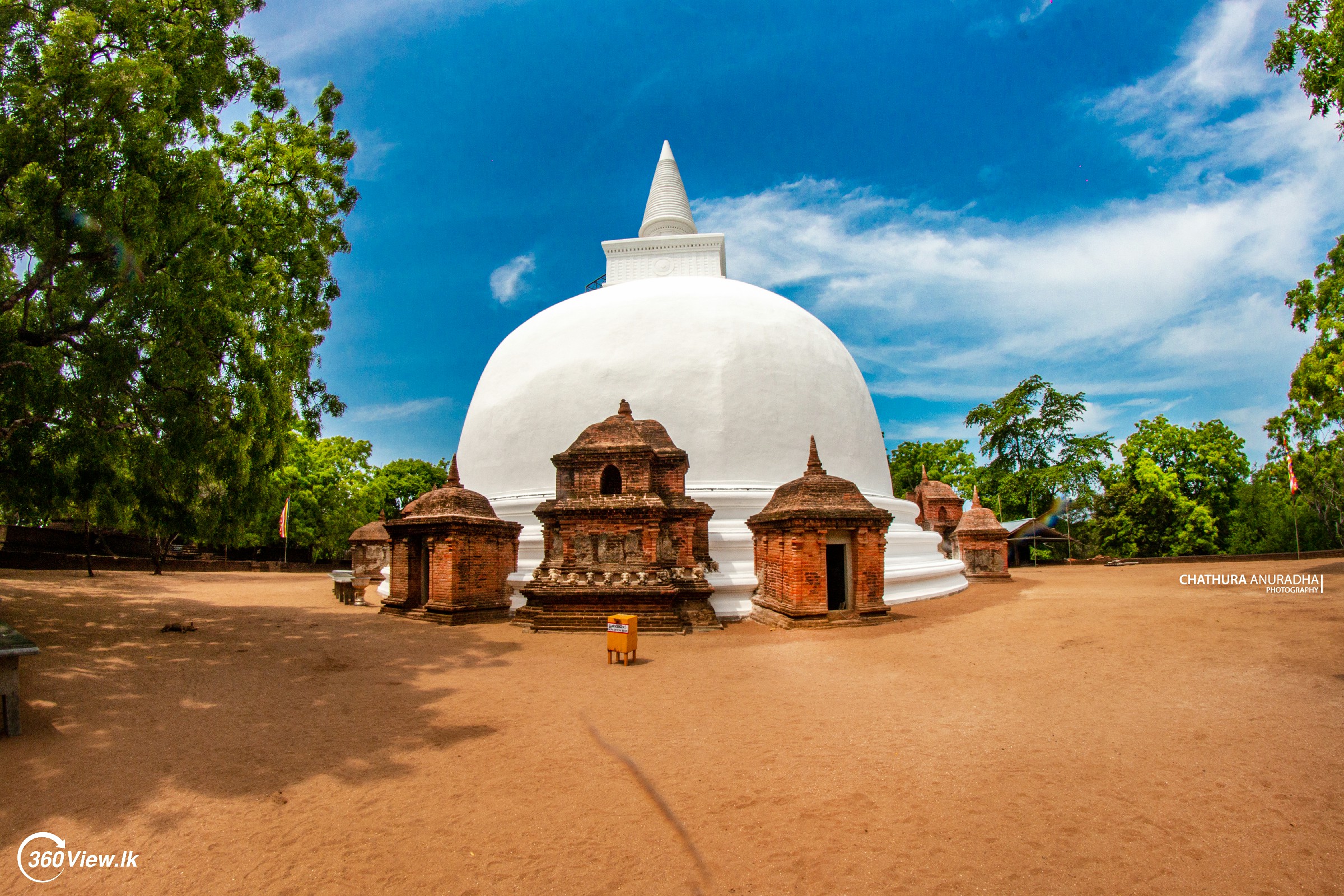
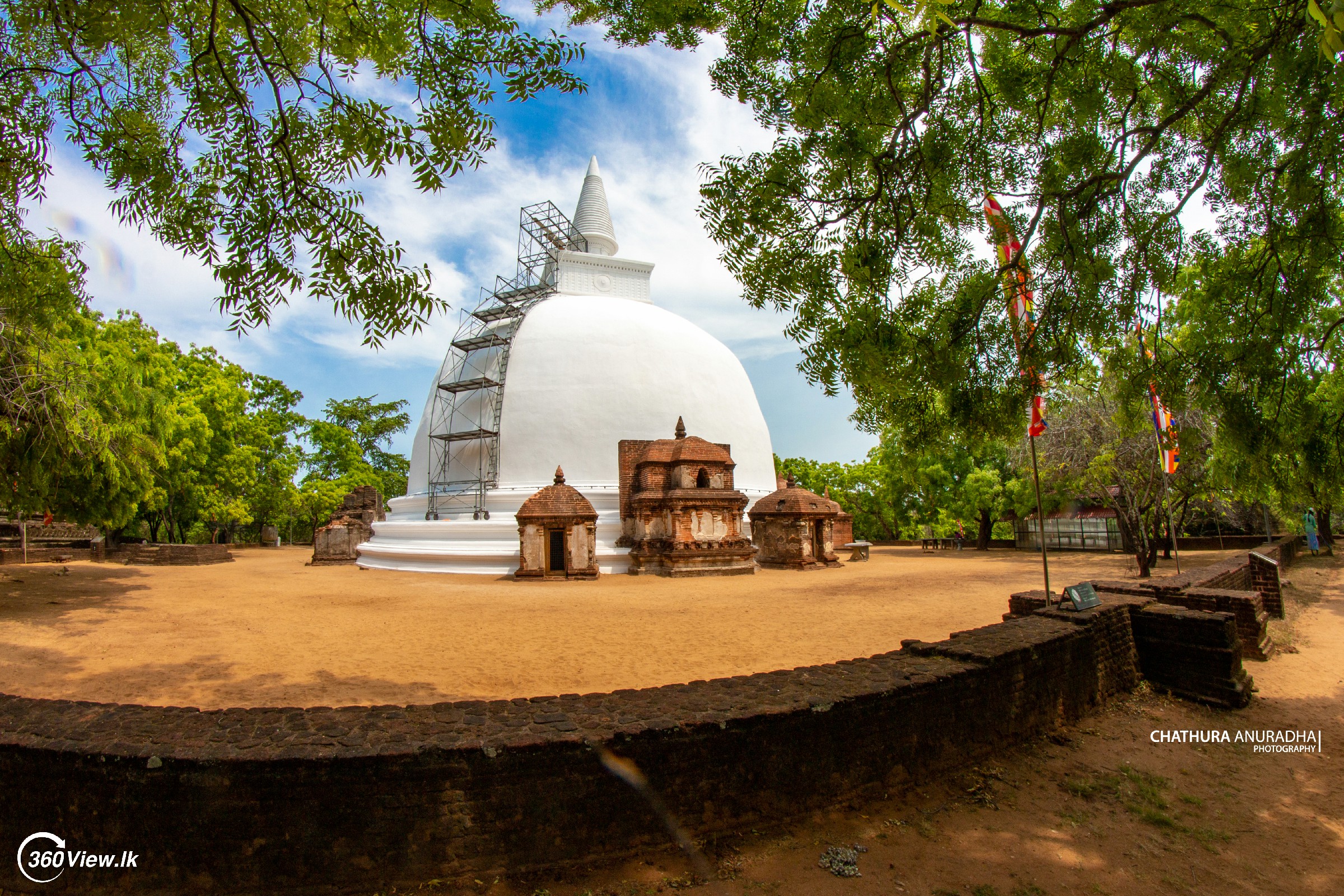
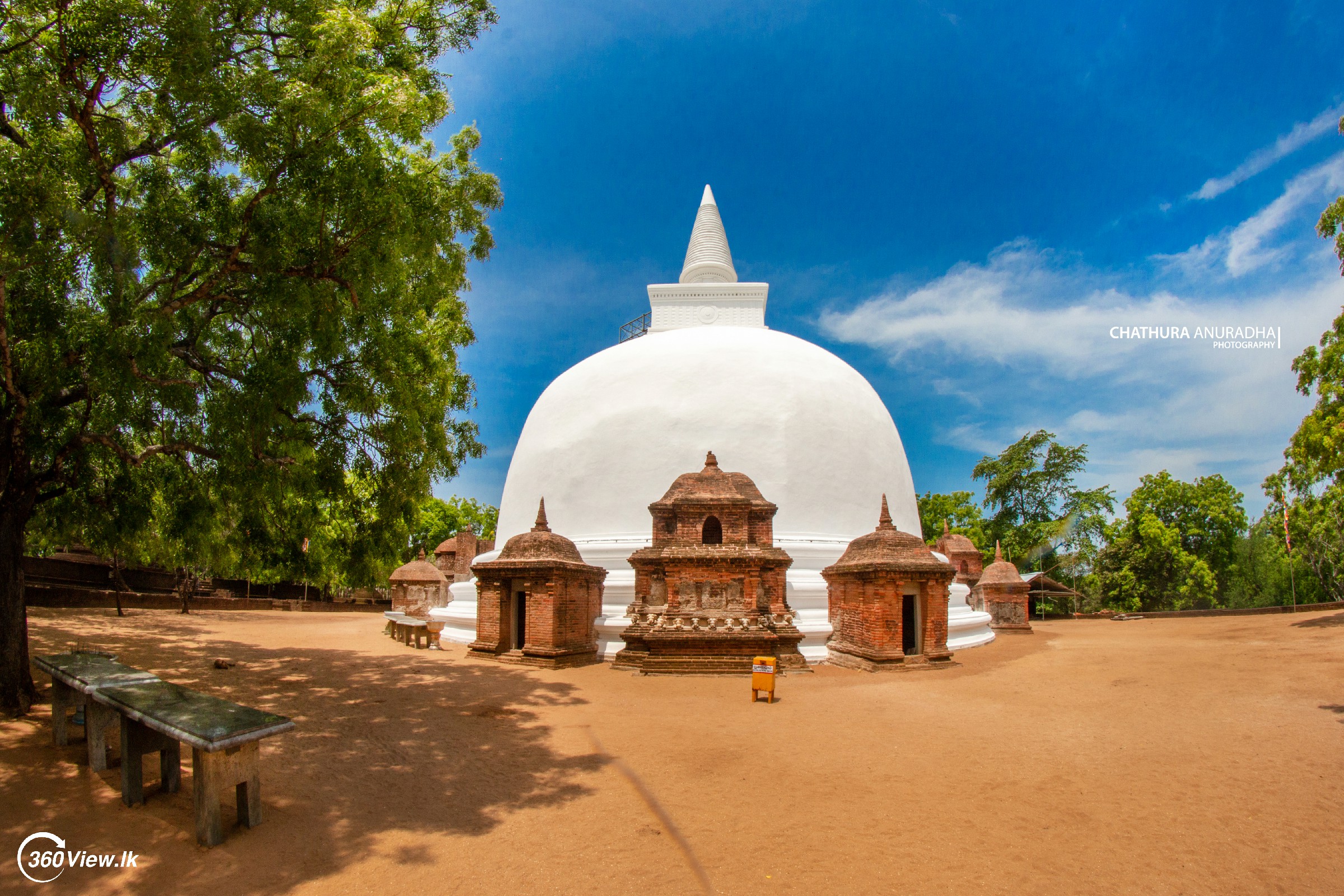
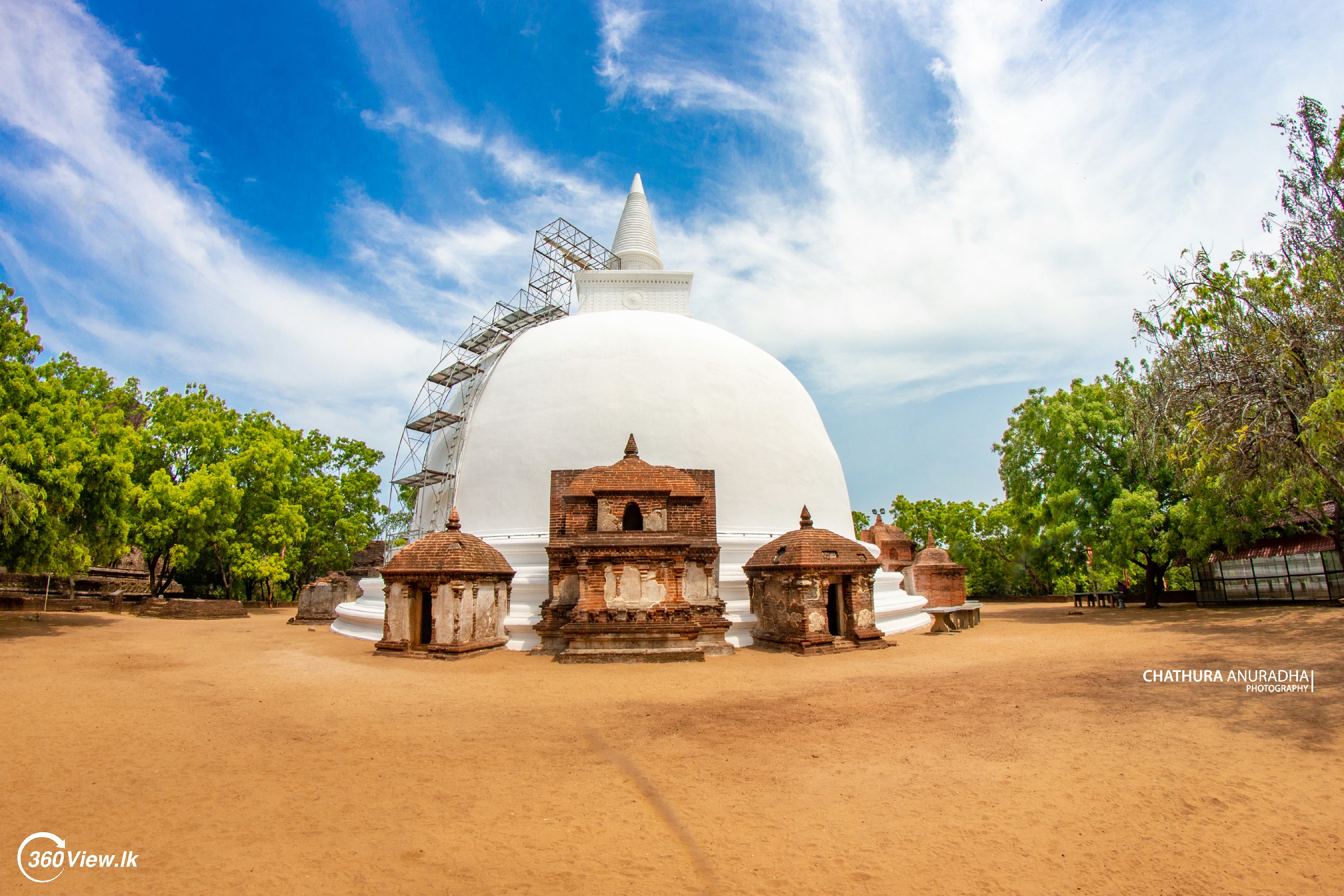
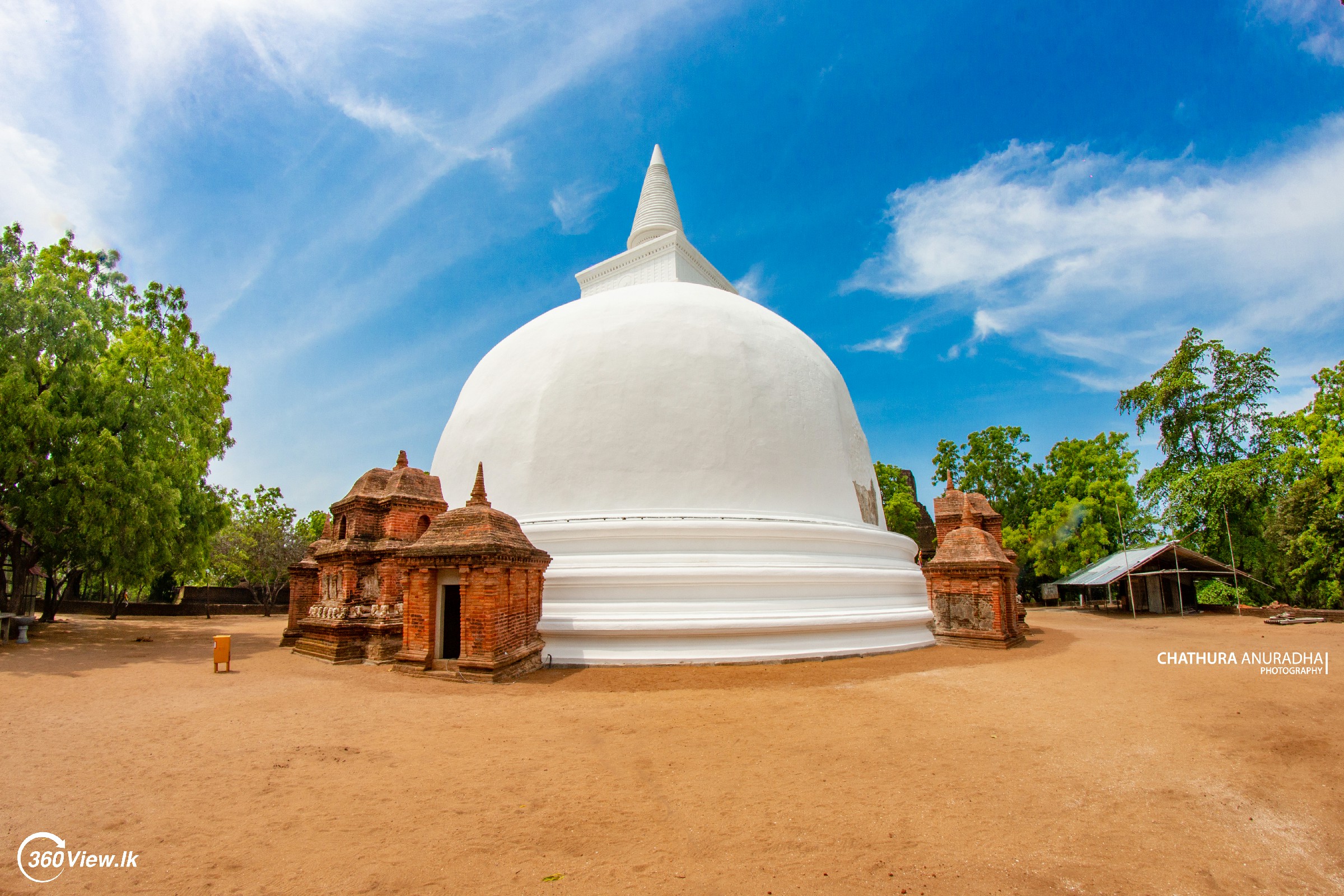
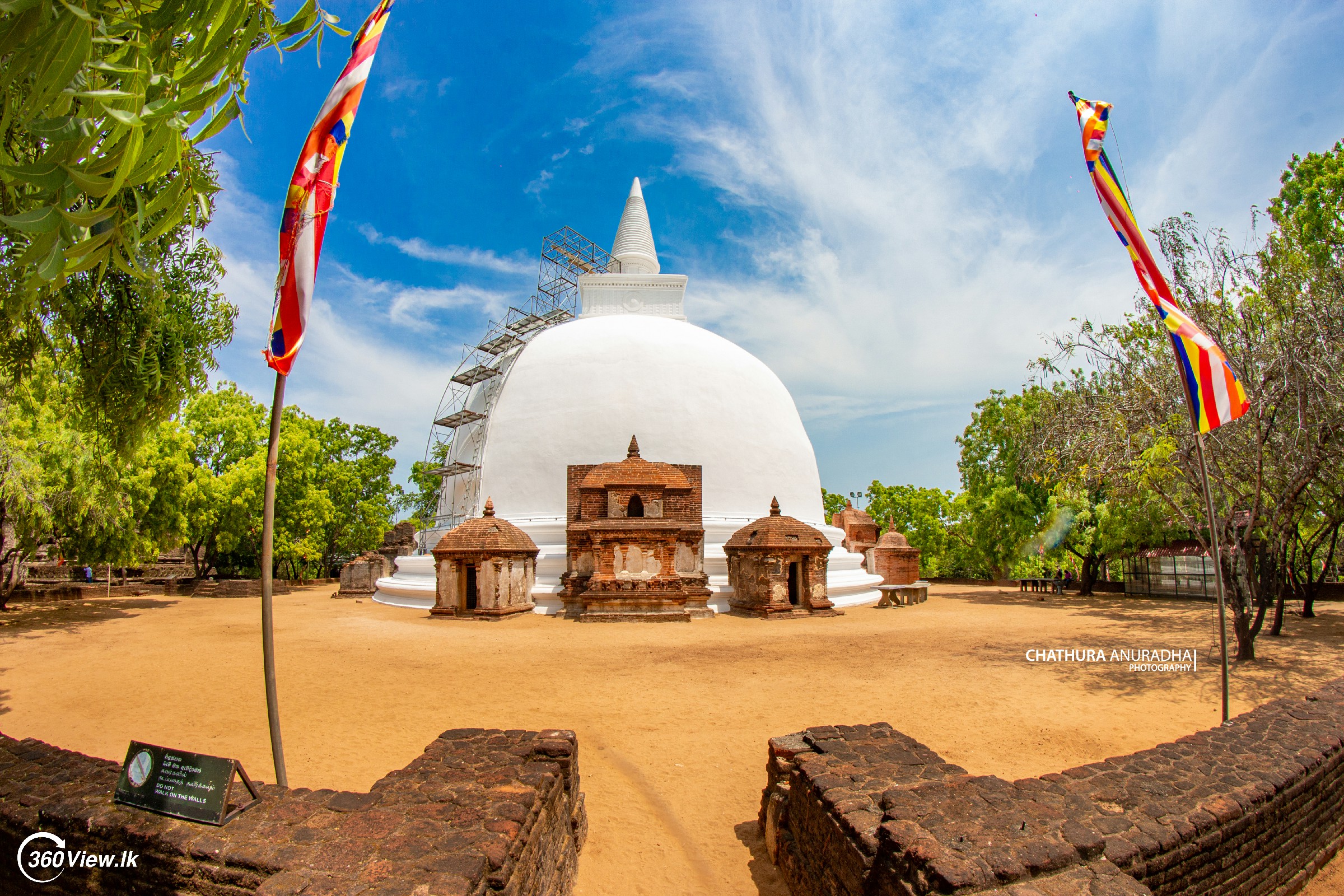
There are four frontispieces located at the cardinal pints surrounding the “Kiri Vehera” and each of these frontispieces are made into rectangular shaped considerably smaller shrines with brick roofs devoted to Lord Buddha. The dome is in bubble shape and it rises up from a base of three receding terraces. Original lime plaster on the dome is preserved and still visible and its present name “Kiri Vehera” was derived from the gleaming white colour of its lime plaster.
As documented by Professor Senarath Paranawithana, the stupa has had a profound, one of the well preserved “Devatha Kotuwa” which is located between “Hathras Kotuwa” and “Koth Kerella”.“Devatha Kotuwa” is a cylindrical structure with a diameter of around 9 feet 6 inches and height of around 7 feet and 8 inches placed on the HathrasKotuwa which is the lowermost rectangular structure. The bases of the DevathaKotuwa is moulded.
The cylindrical surfaces of “Devatha Kotuwa” have been divided into eight equal parts through pilasters. Figures of deities, whose hand gestures symbolizes the attitude of adoration had been carved on these cylindrical surfaces. The name “Devatha Kotuwa” has the meaning of “Enclosure of Deities” giving a glimpse on its design.
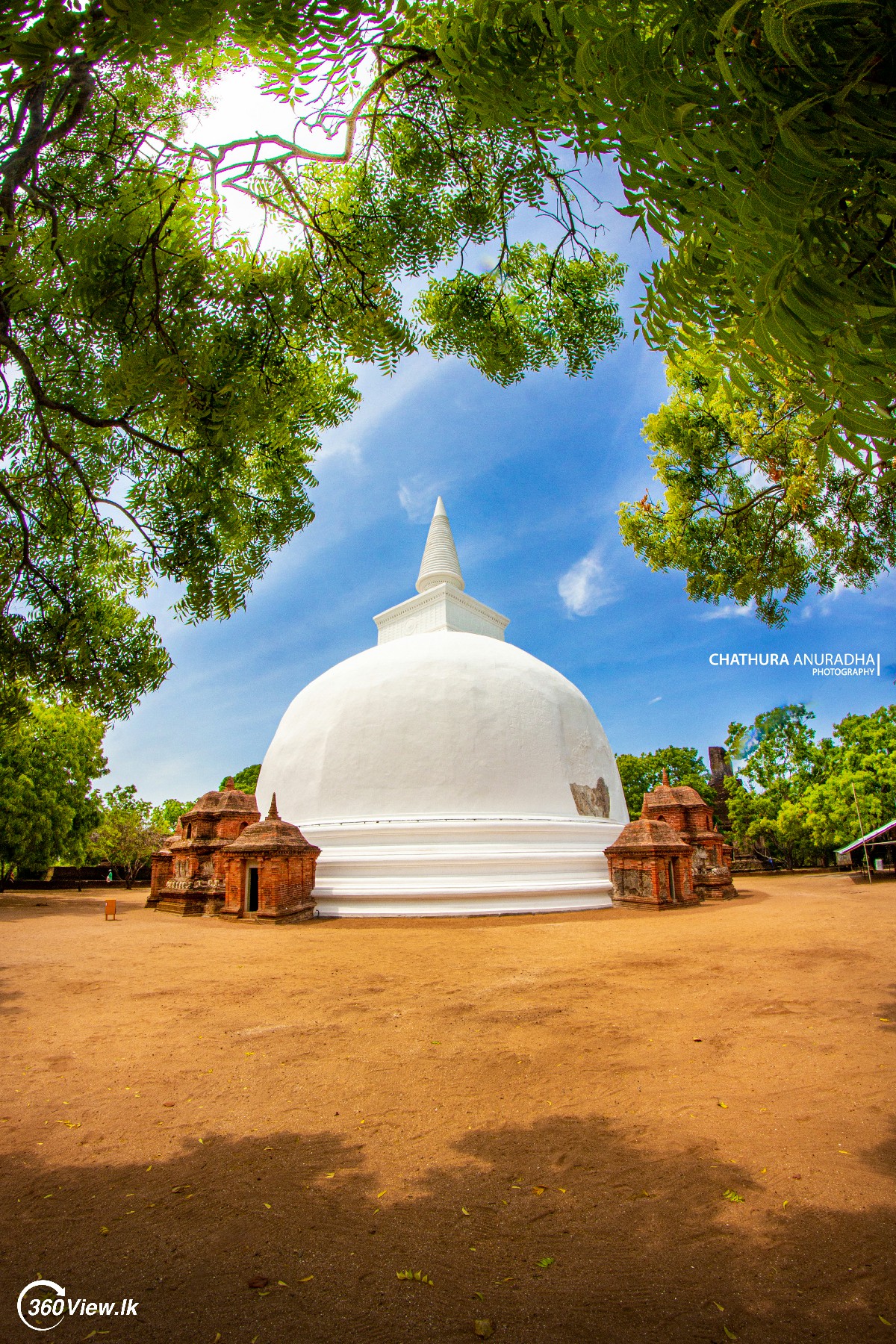
According to Professor Paranavitharana the “Devatha Kotuwa” of “Kiri Vehera Stupa” has had sixteen relief telamonsto support the pseudo-entablature but it has been destructed and weathered over the time. Thus, the relief sculptures of deities are not remaining in the “Kiri Vehera” at present.
Several comparatively smaller stupas which have been restored in recent past are available around “Polonnaruwa Kiri Vehera ” which are considered as the burial chambers of members of royal family and the high priests during the ancient times. Specially, there are two quite similar stupas standing south to the “Lankathilaka Image House” which are considered as built to bury the remains of a king and a queen. Most of these remnants and stupas have been destroyed by the treasure hunters over the time and the valuable belongings which could have been buried in these stupas must have been already looted.